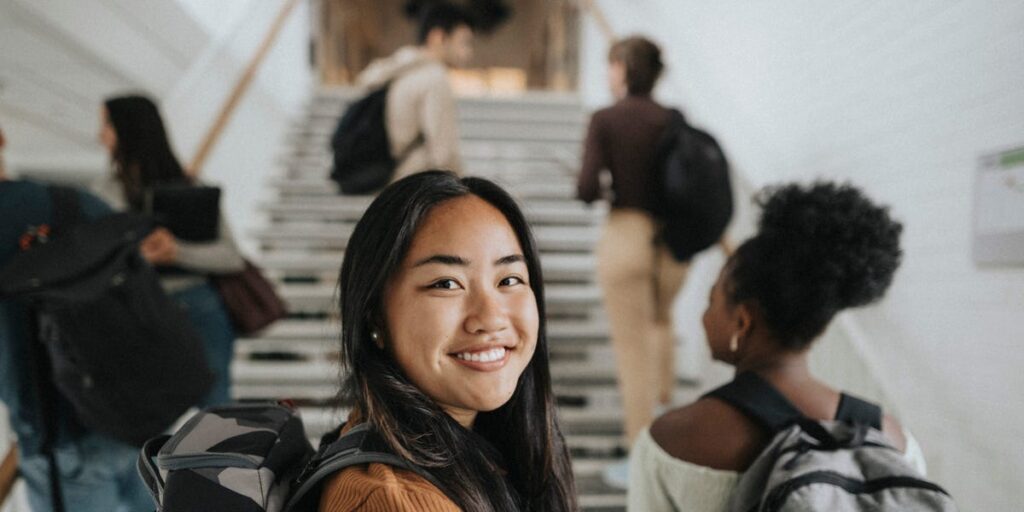- As a low-income student, I didn’t think college was for me.
- I then enrolled in a college class as a high schooler, and it changed everything.
- I could finally see myself in college, and the class helped me find the right school for me.
I didn’t always assume I’d go to college. However, during my senior year of high school, I had an opportunity to dual enroll in an English class at a local college for credit.
I grew up in a small rural town, and my school talked about different pathways post-graduation, including joining the military, entering the workforce, attending a trade school, or taking the “college-bound” track. I liked school, but the bureaucracy behind college enrollment, like college applications and FASFA forms, felt overwhelming at times.
My school allowed select students with the appropriate requirements to attend college classes in person at a local college. Students could earn college credit and interact with college students before returning to high school to finish out the day.
Enrolling in the college class was relatively straightforward since it was through a program at my school. The tuition for the class was covered. I just had to buy the books, which I was able to afford from the money I earned working as a hostess at a restaurant.
New opportunities gave me a glimpse of what waited after high school
On Mondays, Wednesdays, and Fridays during a semester of my senior year of high school, I attended the small liberal arts college in my hometown.
I was side-by-side with college students and gleefully joined freshmen for an introductory English class. The professor was nice and supportive, and the process demystified college for me. Assignments that initially sounded intimidating, like papers and finals, weren’t so different from my high school classwork.
The lectures were enjoyable and included funny movie clips from time to time. Completing the assignments kept me engaged intellectually and helped me feel accomplished.
Since the class was free, it was a no-pressure way for me to experience what college coursework would look like. This gave me practice as a student and made me realize I could handle it.
Most importantly, this opportunity gave me the confidence as a low-income student to realize that I could handle college classes. It also helped save me some money in the long run since I entered college with credits.
It helped me articulate and understand class differences in a new way
My hometown was a microcosm of America. It was socioeconomically diverse. There was rural poverty in my town — which is what I grew up in and was most exposed to during my childhood.
But my town was also home to an expensive college, where my dual enrollment was held. The college’s tuition rates were more expensive than many locals earned all year, so there were affluent areas in my town as well.
Attending the college exposed me to new ways of living. I was integrated into a community that highlighted different realities for me.
While my school emphasized a variety of different options, I now understood that many people would have different paths. Many of the college students I interacted with were always expected to be on a “college-bound” path. Their trajectory reflected their expected outcome, and it was interesting to understand these new perspectives.
It shaped my future
My professor, who taught me in my dual enrollment class, helped me home in on my next steps, anticipating what my future could look like after high school graduation.
He suggested a college for me to apply to, which was the place he’d earned his Ph.D.. It was a school that I had never heard of, and I would never have learned about it without his guidance since it was in another state.
Ultimately, I took his advice and applied to the university that he suggested. I was accepted and attended. That decision changed the trajectory of my life, and it all started with the college class I took in high school.
Read the full article here


